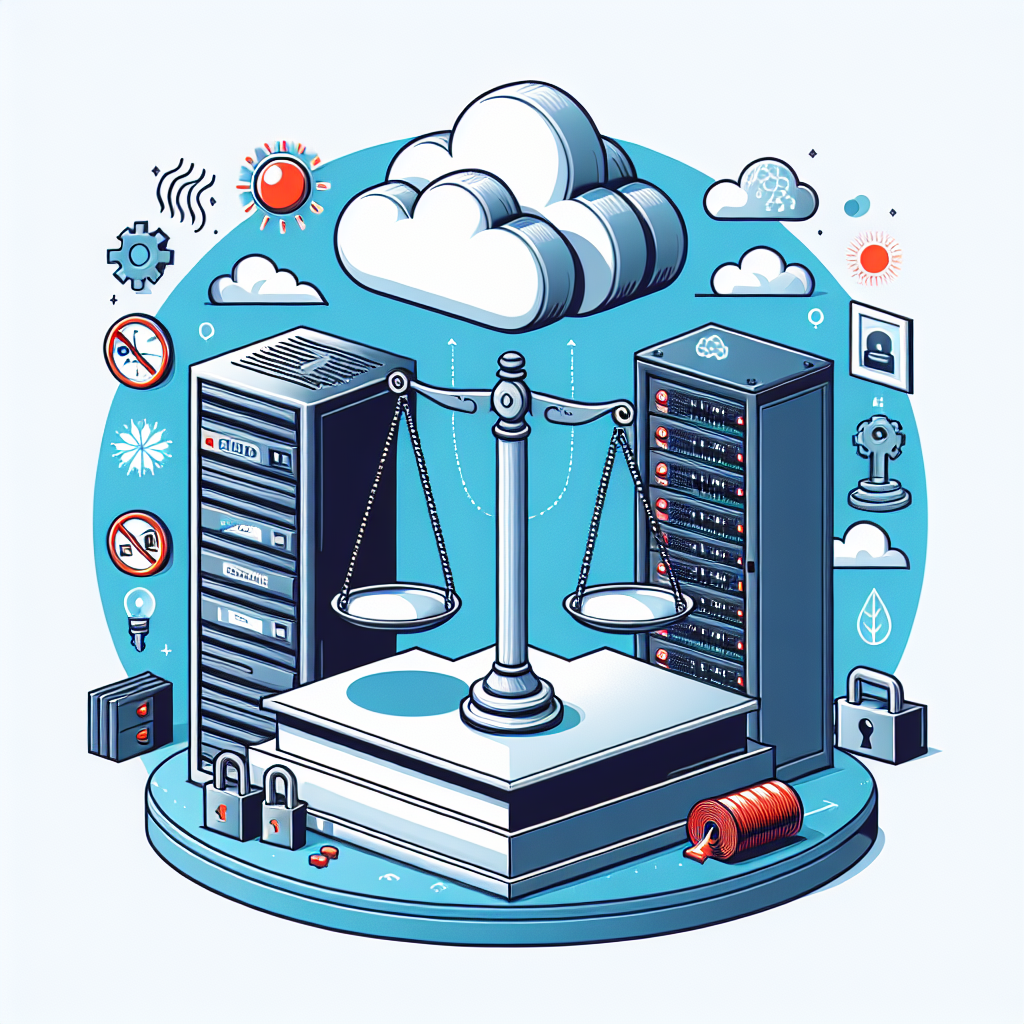In today’s digital age, data storage is a critical component of any organization’s IT infrastructure. With the increasing amount of data being generated and stored by businesses, the debate between cloud and on-premises data storage has become more relevant than ever.
Cloud storage, also known as cloud computing, is the practice of storing data on remote servers accessed over the internet. On the other hand, on-premises storage refers to the traditional method of storing data on physical servers located on-site at the organization’s premises.
Both options have their own set of pros and cons, and the decision between the two ultimately depends on the specific needs and requirements of the organization. Let’s explore the pros and cons of each:
Cloud Storage:
Pros:
1. Scalability: Cloud storage offers virtually unlimited scalability, allowing organizations to easily increase or decrease their storage capacity as needed.
2. Cost-effective: Cloud storage eliminates the need for expensive hardware and maintenance costs associated with on-premises storage.
3. Accessibility: Data stored in the cloud can be accessed from anywhere with an internet connection, making it ideal for remote work and collaboration.
4. Disaster recovery: Cloud storage providers often have robust backup and disaster recovery solutions in place, ensuring data is protected in the event of a disaster.
5. Automatic updates: Cloud storage providers handle software updates and maintenance, eliminating the need for organizations to manage and maintain their own storage infrastructure.
Cons:
1. Security concerns: Storing data in the cloud raises concerns about data security and privacy, as organizations are entrusting their sensitive information to third-party providers.
2. Dependency on internet connection: Cloud storage relies on a stable internet connection for data access, which can be a challenge in areas with unreliable connectivity.
3. Compliance issues: Some industries have strict regulations regarding data storage and privacy, which may limit the use of cloud storage for certain organizations.
4. Data transfer speeds: Uploading and downloading large amounts of data to and from the cloud can be time-consuming, especially for organizations with limited bandwidth.
On-Premises Storage:
Pros:
1. Control: On-premises storage gives organizations complete control over their data, allowing them to customize security measures and storage configurations to meet their specific needs.
2. Performance: On-premises storage typically offers faster data transfer speeds and lower latency compared to cloud storage, especially for organizations with high-performance computing needs.
3. Compliance: Organizations with strict regulatory requirements may prefer on-premises storage to ensure compliance with data privacy laws and industry regulations.
4. Data sovereignty: On-premises storage allows organizations to keep their data within their own physical boundaries, ensuring data sovereignty and reducing the risk of data breaches.
Cons:
1. Cost: On-premises storage requires significant upfront investment in hardware, software, and maintenance costs, making it less cost-effective than cloud storage in the long run.
2. Scalability limitations: On-premises storage may have limitations in terms of scalability, requiring organizations to invest in additional hardware as their storage needs grow.
3. Maintenance: Organizations are responsible for managing and maintaining their own storage infrastructure, which can be time-consuming and resource-intensive.
4. Disaster recovery: On-premises storage may lack the robust backup and disaster recovery solutions offered by cloud storage providers, putting organizations at risk of data loss in the event of a disaster.
Ultimately, the decision between cloud and on-premises storage should be based on an organization’s specific needs, budget, security requirements, and regulatory compliance. Many organizations opt for a hybrid approach, combining the benefits of both cloud and on-premises storage to create a flexible and scalable data storage solution that meets their unique needs. Whichever option is chosen, it is essential for organizations to carefully evaluate the pros and cons of each to make an informed decision that aligns with their strategic objectives.

Leave a Reply
You must be logged in to post a comment.